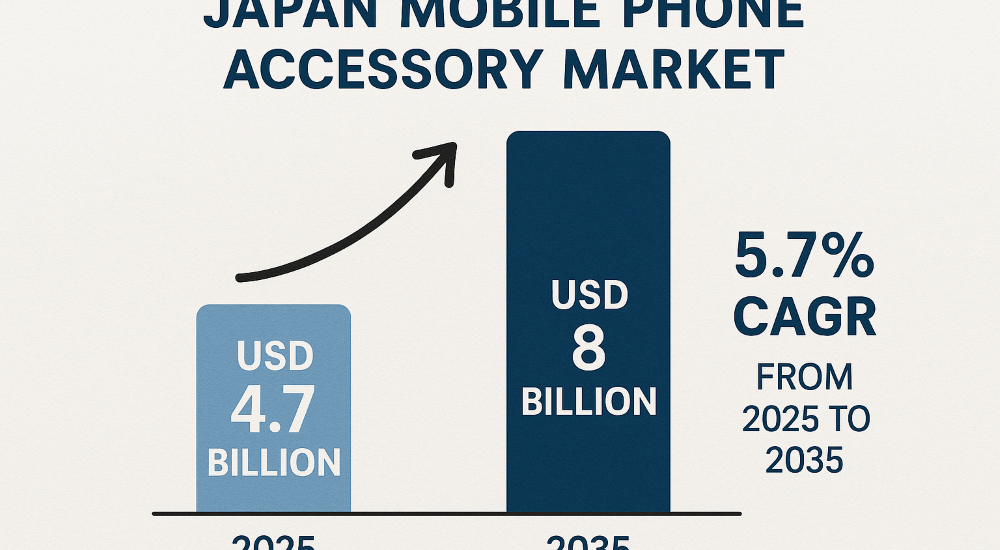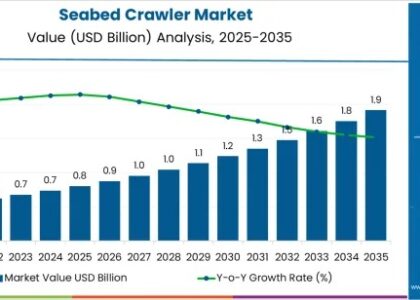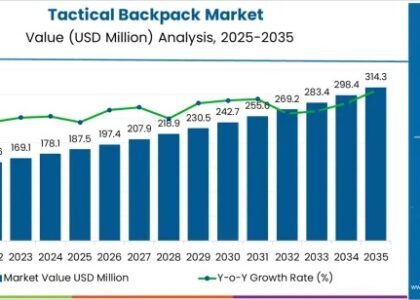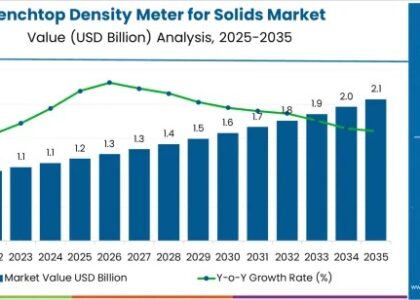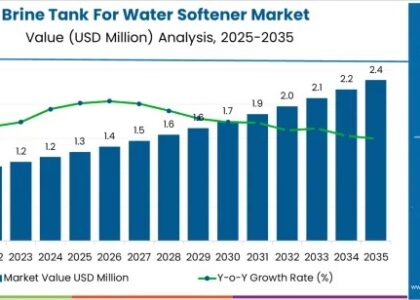The mobile phone accessory market in Japan stands at a pivotal juncture as it prepares to capitalize on an evolving consumer landscape and technological advancements. Projected to reach a substantial USD 4.7 billion in 2025, this industry is anticipated to continue its robust growth trajectory, with forecasts suggesting a climb to USD 8 billion by 2035—a compound annual growth rate (CAGR) of 5.7% over the decade. This promising outlook underscores the increasing importance of accessories in enhancing user experience and driving smartphone ecosystem revenues.
Discover Insights into the Market Request Your Sample Report! https://www.futuremarketinsights.com/reports/sample/rep-gb-18090
The Current Landscape: A Mature Market with Renewed Dynamism
Japan’s mobile phone accessory market has long been a mature sector characterized by high consumer expectations, a tech-savvy population, and early adoption of cutting-edge innovations. Unlike many emerging markets where accessory consumption is driven primarily by affordability and availability, Japan’s market is distinguished by premium quality products, brand loyalty, and a focus on innovation.
Accessories—ranging from protective cases, chargers, and screen protectors to smart wearables and audio devices—serve as vital extensions of smartphones. They not only protect and personalize devices but also enhance functionality and connectivity. The growing trend towards lifestyle integration, particularly in areas like health monitoring and wireless audio, has catalyzed demand for smart accessories, fueling market expansion.
Driving Forces Behind Market Growth
Several key factors underpin the optimistic forecast for the Japan mobile phone accessory market:
- Technological Advancements and Innovation: Japan’s role as a global technology pioneer ensures a steady stream of innovative accessories, especially in wireless charging, Bluetooth audio, and AI-enabled devices. Integration with 5G technology and IoT (Internet of Things) ecosystems is also expected to spur demand for next-generation accessories that improve connectivity and convenience.
- Increasing Smartphone Penetration and Replacement Cycles: Although smartphone penetration in Japan is already high, the upgrade cycle remains an important market driver. Consumers purchasing new smartphones typically invest in new accessories that complement enhanced device features. The introduction of foldable phones and rugged smartphones presents opportunities for novel accessory designs.
- Consumer Preference for Premium and Customizable Products: Japanese consumers value craftsmanship and customization, which has led to a vibrant market for designer cases, limited-edition accessories, and multifunctional add-ons. Brands that combine aesthetics with utility continue to command premium pricing, elevating overall market value.
- Growing Awareness of Device Protection and Maintenance: Rising awareness of device longevity has bolstered demand for protective accessories, including advanced screen protectors, shock-absorbent cases, and cleaning kits. This trend has been further accelerated by the increasing cost of flagship smartphones.
Discover new opportunities and gain transformative insights with our Consumer Electronics Industry Reports! https://www.futuremarketinsights.com/industry-analysis/consumer-electronics
Challenges on the Horizon
Despite the promising outlook, the Japan mobile phone accessory market faces several challenges:
- Market Saturation and Competition
The mature nature of the market results in fierce competition among established players and emerging startups. Differentiation through innovation and branding is essential to maintain market share. - Rapid Technological Obsolescence
The fast pace of smartphone technology development requires accessory manufacturers to be agile and forward-thinking, which demands significant R&D investment. - Economic and Supply Chain Volatility
Fluctuations in global supply chains and raw material costs could impact pricing and availability, potentially slowing growth.
Future Trends to Watch
Looking ahead, several trends are poised to shape the next decade of the Japan mobile phone accessory market:
- Sustainability and Eco-friendly Products
Growing environmental consciousness among consumers is pushing brands to develop biodegradable, recyclable, or upcycled accessories. - Integration with Health and Fitness Technologies
Wearables and smart accessories that track health metrics will increasingly integrate with smartphones, driving convergence between personal wellness and mobile technology. - Enhanced Personalization through AI and AR
Artificial intelligence and augmented reality may revolutionize how consumers select and customize accessories, offering virtual try-ons and predictive recommendations. - Cross-Device Compatibility
Accessories designed to work seamlessly across multiple device types—including smartphones, tablets, laptops, and smart home devices—will enhance consumer convenience.
Key Industry Players
- NIPPON TELEPHONE INC
- Fujicell Techno Corporation
- Bscstore Inc.
- Cambridge Soundworks Inc.
- Kingston Technology Company Inc.
- Western Digital Corporation
- Sony Corporation
- Plantronics, Inc.
- Logitech International S.A.
- The Case Factory
Get Full Access of this Report: https://www.futuremarketinsights.com/reports/demand-and-trend-analysis-of-mobile-phone-accessory-in-japan
Key Segmentation
By Packaging Type:
With respect to packaging type, the industry is classified into blister packs, clamshells, clear view boxes, folding cartons, pouches & bags, and trays.
By Price Range:
In terms of price range, the market is divided into low, medium, and high.
By Product Type:
By product type, the market is divided into batteries, chargers, data cables, headsets, memory cards, mounts & stands, portable speakers, power banks, protective cases & covers, and selfie sticks.
By Sales Category:
Based on sales category, the market is classified into 3rd parties, brands, and while labels/no name brands.
By Sales Channel:
Based on sales channel, the market is divided intoe-commerce, electronic stores, exclusive stores (branded stores), franchise outlets, and retail outlets (multi-brand outlets).
By Region:
Based on region, the market is classified into Kanto, Chubu, Kinki, Kyushu & Okinawa, Tohoku, and the rest of Japan.
About Future Market Insights (FMI)
Future Market Insights, Inc. (ESOMAR certified, recipient of the Stevie Award, and a member of the Greater New York Chamber of Commerce) offers profound insights into the driving factors that are boosting demand in the market. FMI stands as the leading global provider of market intelligence, advisory services, consulting, and events for the Packaging, Food and Beverage, Consumer Technology, Healthcare, Industrial, and Chemicals markets. With a vast team of over 400 analysts worldwide, FMI provides global, regional, and local expertise on diverse domains and industry trends across more than 110 countries.
Contact Us:
Future Market Insights Inc.
Christiana Corporate, 200 Continental Drive,
Suite 401, Newark, Delaware – 19713, USA
T: +1-347-918-3531
For Sales Enquiries: sales@futuremarketinsights.com
Website: https://www.futuremarketinsights.com
LinkedIn| Twitter| Blogs | YouTube


